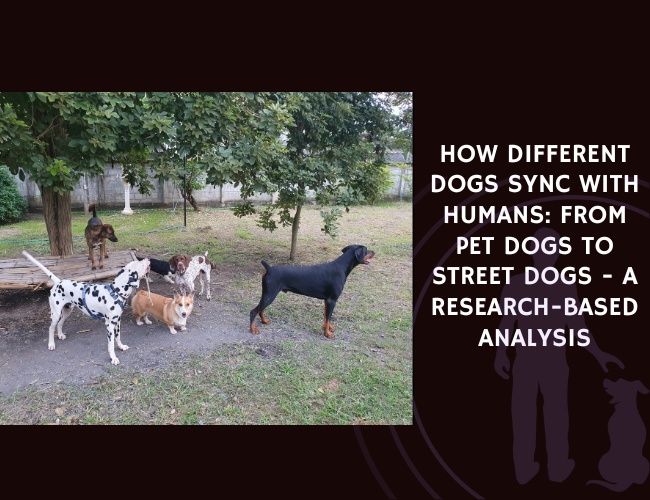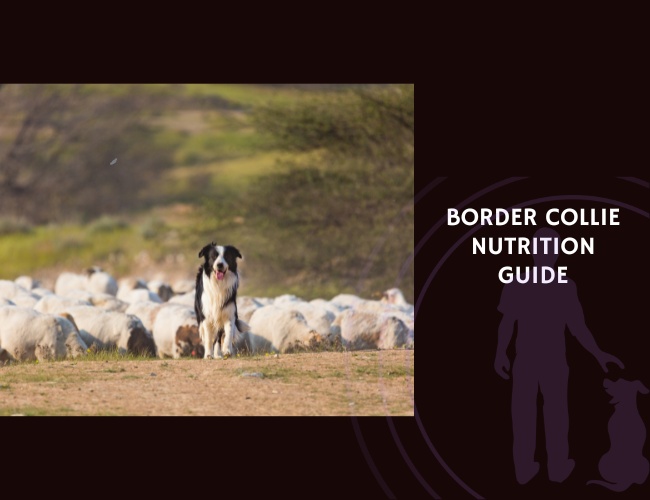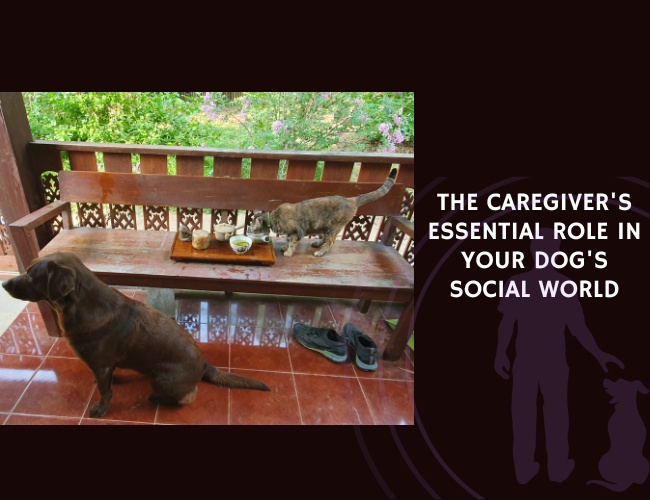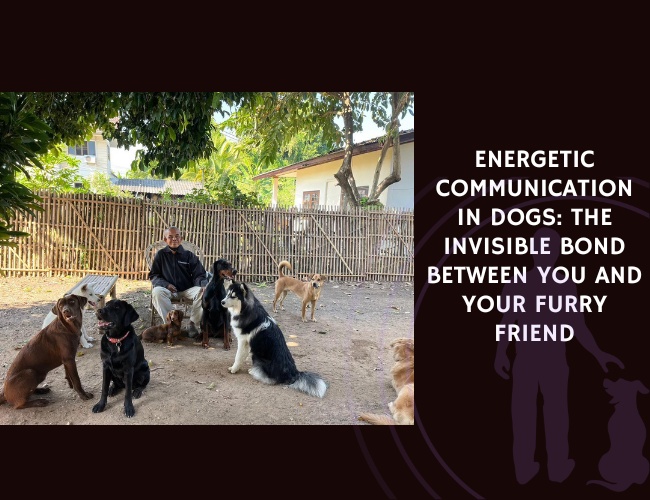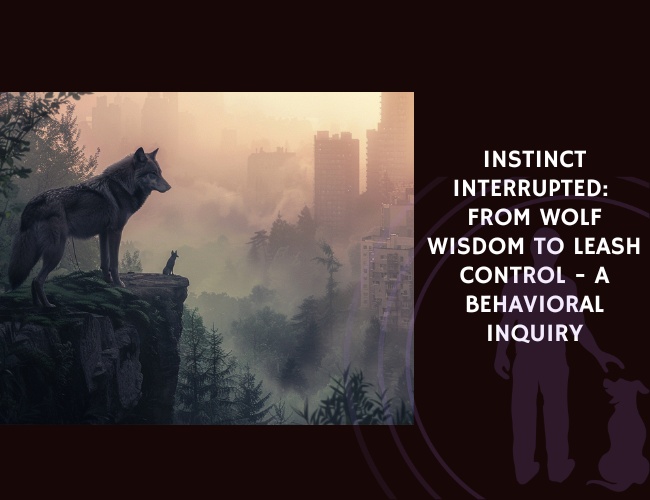Introduction to Behavioral Synchronization in Dogs
What Is Behavioral Synchronization?
Behavioral synchronization is when two or more individuals line up their movements, attention, or even feelings—without being told. In dogs, this alignment can look like walking in step with a person, matching their gaze, or even sharing the same “mood” during different situations. For instance, your dog might start wagging its tail faster when you’re excited, or slow down its pace to walk alongside you during a stroll. This sort of togetherness isn’t just about copying; it’s a sign of social connection and mutual understanding.
Research Across Dog Populations
Scientists have explored how this synchronization plays out in different groups of dogs. Pet dogs, working dogs, shelter dogs, and free-ranging dogs (also called street dogs) all show unique patterns. Pet dogs, who spend loads of time with humans, often match their behavior closely with their owners. They walk alongside, pay attention to where their human looks, and can even mirror emotional states, like excitement or calm [Species Differences in Behavioral S.txt]. In contrast, shelter dogs may find it harder to sync up. Their environments are less predictable, and human interaction can be limited or stressful. Working dogs, who are specially trained for cooperation (think of guide dogs or police dogs), show impressive task-specific synchronization born out of focused training. Free-ranging dogs, on the other hand, might only mirror human behavior when there’s an immediate reward, like food, rather than from emotional closeness.
Why Synchronization Matters
Understanding how dogs align physically and emotionally with people matters a lot. It’s not just about having a dog that walks nicely on a leash. Behavioral synchronization is a window into the dog’s ability to connect, cooperate, and feel safe with humans. Higher synchronization often points to stronger social bonds, better stress management, and improved communication. These insights can guide how we train, adopt, and interact with dogs across different settings.
Getting a handle on synchronization helps everyone—dog owners, trainers, shelter workers, and researchers—create happier and healthier bonds with their canine companions, no matter where those dogs come from or what roles they play.
Types of Behavioral Synchronization in Human-Dog Interactions
Walking in Sync: How Dogs Match Human Movements
Have you ever noticed your dog matching your steps on a walk? This natural tendency is called locomotor synchronization. Research shows that pet dogs often adjust their walking pace and direction to align with their humans, both inside the home and outdoors. This isn’t just about following a leash—it reflects a deep social connection. However, this synchronization is not equally strong across all dog groups. Pet dogs, who enjoy daily routines and close companionship, are the most in tune. Shelter dogs tend to struggle more with syncing up, likely because of unpredictable interactions and higher stress levels. Working dogs, by contrast, feature highly refined synchronization during tasks, owing to their focused training. For free-ranging or street dogs, alignment with humans is more sporadic and driven by situational benefits, like food rewards or safety.
Responding to Gaze and Gestures: Sensitivity to Human Cues
Dogs are true masters at picking up visual cues from humans. They often respond to where someone is looking, or pointing, without needing verbal directions. This sensitivity makes a big difference during cooperative activities, like playing fetch or navigating obstacles. Even subtle shifts in gaze or hand signals can direct a motivated dog’s attention. Studies show that dogs with stronger bonds to their caretakers—such as pets and trained working dogs—tend to be the best at reading and responding to these cues. Street and shelter dogs may also catch on, but often with more hesitation or less precision depending on their history with people.
Sharing Emotions: Emotional Contagion and Arousal
Behavioral synchronization goes beyond just moving in step or following gestures. It includes sharing emotional states—a phenomenon called emotional contagion. For example, if you’re excited or anxious, your dog might start acting the same way. Pet dogs typically mirror their owners’ moods more closely, reflecting years of shared routine and trust. Working dogs, depending on training, can be highly attuned to handler emotions. On the other hand, dogs in shelters or living freely might be less likely to pick up on people’s feelings, often focusing on immediate needs rather than emotional exchanges.
Synchronization in dogs is remarkable, but how does it develop and what makes some dogs excel while others lag? Let’s explore these differences among pet, working, shelter, and free-ranging dogs.
Pet Dogs: The Masters of Emotional Attunement
Foundations of Emotional Connection
Pet dogs are champs when it comes to forming close relationships with humans. They often share the home, daily routines, and emotional highs and lows of their owners. This frequent contact leads to deep bonds and helps dogs tune in to their human companions easily. Day in and day out, pet dogs observe human body language, listen to voices, and adapt to the patterns at home, all of which set the stage for strong behavioral alignment.
Research Evidence: High Levels of Synchronization
Research shows that pet dogs aren’t just good at being with us—they actually move, react, and even feel alongside us. For example, studies demonstrate that pet dogs walk in sync with their owners, both inside and outside the house. It’s not just about movement. Pet dogs respond to human gaze and gestures, following where we look and pointing out objects we indicate, sometimes even better than other dog types.
Another fascinating finding is emotional mirroring. When a person feels stressed or excited, their pet dog often shows similar changes in energy and emotion. This kind of synchronization doesn’t just happen by accident. It’s a product of lots of positive, regular experiences together. When pet dogs live in stable, supportive environments, their attunement to human moods and actions is at its best.
The Power of Routine and Stability
The stable home environments most pet dogs enjoy help reinforce these connections. Following the same feeding schedules, playtimes, and rest periods makes it easier for them to predict and align with what their person is about to do next. Routine also lowers stress and builds trust, allowing pet dogs to stay attentive and responsive in everyday situations.
Because of this ongoing social exposure and emotional support, pet dogs consistently top the charts for behavioral synchronization with humans. Their ability to tune in, mirror, and bond is one of the big reasons they remain our closest animal companions.
From here, the focus shifts to understanding how other groups of dogs manage synchronization when those close bonds and routines aren’t always possible.
Shelter Dogs: Synchronization Challenges and Potential
How Environment and Experience Affect Synchronization
Shelter dogs live very different lives compared to pet dogs. Instead of cozy routines and daily human cuddles, they often experience limited and inconsistent human interaction. Many shelter dogs meet new people every day, and they don’t always get the same amount of attention or affection. Because trust and emotional bonds take time to build, these dogs struggle to synchronize their movements and emotions with people. Research shows that shelter dogs tend to show lower levels of behavioral synchronization with their human caregivers than pet dogs do. Simply put, it’s harder for them to “get in sync” when their social world changes all the time or when humans come and go unpredictably.
Stress Factors in the Shelter Environment
Life in a shelter is often stressful for dogs. Constant noise, new faces, and the presence of other anxious animals make it tough to relax. This stress gets in the way of forming strong connections with humans. It can also impact a dog’s willingness to look to people for cues, imitate movements, or even match emotional states. For example, if a dog is feeling fearful or overwhelmed, it’s less likely to approach or mirror the body language of a shelter worker. This doesn’t mean shelter dogs can’t sync with humans—it just means the deck is stacked against them at first.
Room for Improvement With Positive Experience
Here’s the hopeful part: shelter dogs can improve their synchronization skills with consistent, positive human interaction [Species Differences in Behavioral S.txt]. Studies have noticed that when shelter dogs get regular, predictable contact with a familiar caregiver, they start to align their behaviors more closely with that person. Even things like daily walks, playtime, or training sessions can boost their ability to match pace, respond to gestures, or share emotional states. This suggests that with patience and a steady presence, shelter dogs have the potential to close the gap with their pet dog counterparts.
Positive, structured experiences not only make life better for the dogs, but also improve their chances of being noticed and adopted by loving families. This chapter highlights how important the human touch is for helping shelter dogs thrive, setting the stage for understanding synchronization in other dog populations.

Working Dogs: Task-Specific Synchronization Excellence
A Unique Bond Built on Precision
Working dogs—like guide dogs, police partners, and service dogs—stand apart for their fine-tuned ability to sync with humans during complex tasks. Unlike pet or shelter dogs, these canines undergo intensive, specialized training focused on close cooperation and reliability in high-stakes contexts. Their daily routines with their human partners are designed to hone a specific set of behaviors, making their synchronization highly context-dependent and accurate.
How Training Shapes Behavioral Alignment
Training is at the heart of the working dog’s skillset. These dogs are exposed to repeated tasks that require anticipating and responding precisely to human cues. Handlers use clear commands, body language, and positive reinforcement to build this foundation. Over time, working dogs learn to:
- Move in precise formation during walks or searches
- Respond instantly to subtle gestures or voice commands
- Remain calm and focused during stressful situations
- Mirror specific postures or actions needed for a job—like lying still or running ahead
This daily, targeted interaction isn’t just about obedience; it’s about cultivating a partnership in which both human and dog work almost as a single unit.
The Role of Reinforcement and Shared Routines
Reinforcement plays a huge part. By rewarding each accurate, aligned movement, handlers teach dogs that synchronization leads to positive outcomes—this could be food, praise, or even a favorite toy. Such focused training means working dogs are often the best at matching their handler’s actions in task-related settings, showing a clear edge over other dog populations when it comes to behavioral unity.
Context Is Everything
Interestingly, while pet dogs may shine in emotional attunement and spontaneous syncing at home, working dogs excel in environments demanding tight coordination—think rescue operations, guiding people with visual impairments, or sniffing out hazards. Their synchronization is less about cozy companionship and more about purposeful action, honed for reliability across varied scenarios.
Through this special bond and daily practice, working dogs exemplify what’s possible when animal and human learn to “think” and move together with purpose. Their abilities not only save lives but show us the remarkable heights of interspecies cooperation.
In Sync.
Dogs don’t just follow—they connect. Behavioral synchronization shows how dogs mirror our movements, respond to our gaze, and even feel what we feel. It’s more than obedience; it’s a sign of trust, bonding, and emotional alignment.
From loyal pets to street-smart strays, each dog group shows unique syncing patterns with humans. While pets naturally attune through daily routines, shelter dogs need stability to catch up. Working dogs excel in task-based coordination, and free-ranging dogs align when it serves their survival.


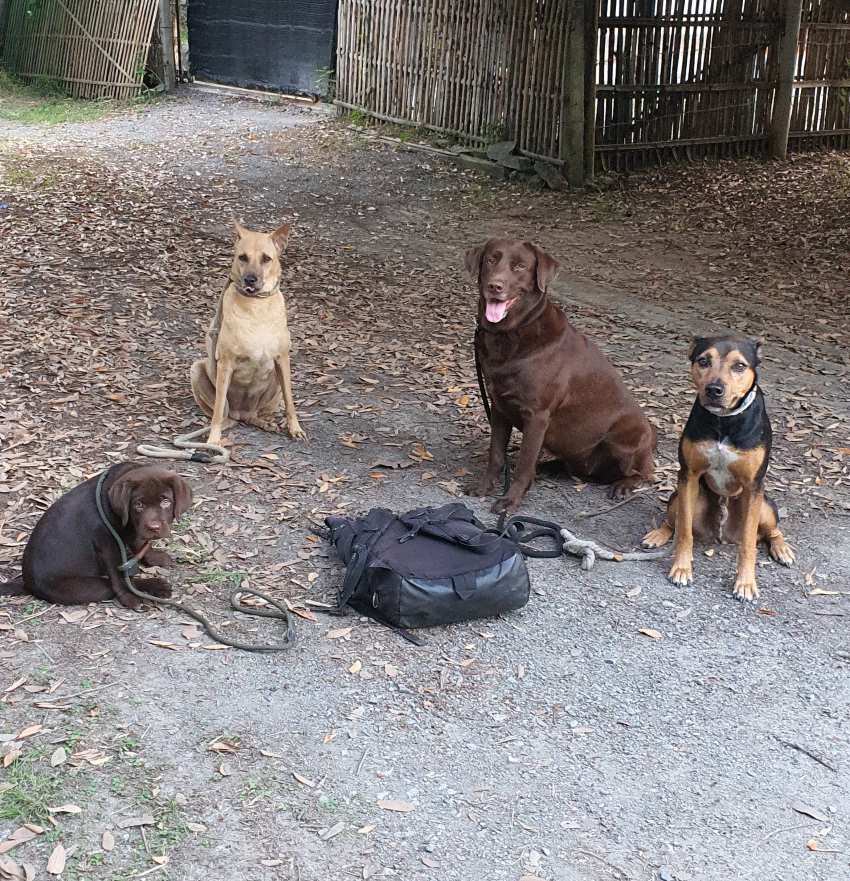
Understanding synchronization helps us train better, connect deeper, and support dogs across all environments. Whether it’s a wagging tail or a shared mood, these moments of sync are the heartbeat of human-dog relationships.
Free-Ranging Dogs: Opportunistic Synchronizers
Human Interaction Patterns
Free-ranging dogs—often called street or village dogs—lead lives with very different rhythms than pet, shelter, or working dogs. These dogs roam neighborhoods, alleys, or countryside with minimal and mostly sporadic human contact. Unlike pets, they don’t have a daily schedule with routine walks, meals, or cuddles. Any attention or resources they get from people, such as food scraps or a gentle pat, is often unpredictable.
Because their human interactions are so occasional, free-ranging dogs depend less on emotional bonding and more on the immediate benefits a human might offer. Their worlds are not shaped by trust built over time but by what the next encounter might provide.
Motivation and Synchronization
The way free-ranging dogs synchronize with humans is shaped by opportunity. Unlike working or pet dogs, they aren’t seeking approval or affection. Instead, they often tune in to people when it seems like there’s a clear reward—think leftovers from a food cart or a place to rest in the shade near a human gathering. This synchronization is practical, not sentimental.
These dogs are experts at reading situations and making quick decisions. For instance, if a person offers food, a street dog may instantly align its pace and focus with the person’s actions—curiously following or waiting for a handout. If there’s no clear reward, their interest quickly fades, and they move on.
Adaptation in Unpredictable Environments
Street environments are unpredictable, demanding flexibility and resilience. Free-ranging dogs develop robust problem-solving skills to match. Their synchronization is not constant—it’s situational, adjusted to the changing tides of their surroundings. Their success often depends on their ability to quickly recognize patterns and opportunities presented by humans, rather than by building deep, trusting bonds.
This adaptive approach means that while free-ranging dogs might not display the intricate emotional attunement of pets or the trained precision of working dogs, they show impressive street smarts. Their strategies are honed for survival in human-dominated but often indifferent worlds, making their synchronization style unique and ever-evolving.
As we continue to explore dog-human relationships, it’s fascinating to consider how these strategies reflect a dog’s experience and the nuances of their social world.
Contextual Differences in Synchronization
Controlled Tasks Versus Natural Environments
Research into dog-human behavioral synchronization shows that context is everything. When we look at controlled tasks like obedience training, researchers can precisely measure how dogs match their actions with human cues. Examples include sitting on command or walking at a set pace. These structured situations make it easier to pinpoint just how well a dog can follow, mirror, or respond to its human partner.
On the flip side, natural environments—think casual strolls on a leash, playful sessions, or relaxed time together—reveal a different story. In these more everyday settings, synchronization is often more spontaneous and reflects genuine social and emotional alignment. For instance, you might notice your dog naturally matching your walking speed or glancing at you to check in during a walk. Pet dogs typically show the highest levels of this kind of sync, reflecting their close ties and shared routines with humans.
Key Contexts for Synchronization
Let’s break down some important scenarios where synchronization comes into play:
- On-Leash Walking:
Many pet dogs match their owner’s pace and direction while leashed—a sign of both training and trust. This kind of walking sync is less common with shelter dogs, who may lack consistent training or bonds with handlers. - Obedience and Training Sessions:
Training provides clear rules and rewards, making it easier for working dogs (and well-trained pets) to coordinate their actions closely with humans. These dogs excel in following specific commands and routines. - Emotional Mirroring:
Dogs can pick up on human stress or excitement, reflecting these emotions in their own behavior. Playful dogs mirror their owner’s energy, while anxious dogs may become tense if their person is unsettled. - Cooperative Tasks:
Activities like problem-solving games or scent detection demand close teamwork. Working dogs, in particular, perform best here, as their roles require precise, practiced coordination with a handler.

Influences on Synchronization
Several factors can shape a dog’s ability to align with humans:
- Environmental Stressors: Noisy, unpredictable environments—like busy shelters—make it much harder for dogs to sync up with people. Consistent, calm settings ease behavioral alignment.
- Familiarity With Humans: Dogs paired with familiar people respond more readily. Longstanding bonds help dogs read and react to their person’s cues.
- Dog’s Social History: A dog’s past experiences with humans leave a strong mark on their ability to synchronize. Regular positive interactions build confidence and trust, laying the foundation for better teamwork.
Understanding how context and environment influence synchronization helps us better connect with our dogs, support their well-being, and tailor training and socialization strategies for various dog backgrounds.
Biological and Cognitive Mechanisms Behind Synchronization
The Oxytocin Connection
When it comes to building strong bonds between dogs and humans, oxytocin often steals the spotlight. This hormone, sometimes called the “love hormone,” is released during positive social interactions—think cuddling, petting, or sharing a favorite game. Elevated oxytocin levels are linked with deeper attachment and smooth communication between dogs and people. Research has found that oxytocin not only boosts emotional closeness but also seems to sharpen synchronization in behavior, making it easier for dogs to align with their human partners in movement and mood.
Cognitive Empathy and Emotional Contagion
Beyond hormones, a dog’s natural ability to tune into human emotions plays a huge part in syncing up. Dogs can read our moods—catching on when we’re stressed, excited, or calm. This superpower, called cognitive empathy, lets them predict our actions and respond in kind. Emotional contagion kicks in too: a happy, energetic owner will often find their dog bouncing along with them, while stress can spread like wildfire. These emotional links help dogs match their body language, gaze, and overall vibe with humans, whether in a noisy park or a quiet living room.
Social Cognition, Attention, and Stress
Synchronization isn’t just about feeling bonded; it requires smarts and focus. Social cognition allows dogs to pick up on subtle signals—like a quick glance or a hand gesture. Dogs with a strong attention span are better at keeping in step, especially during complicated tasks or crowded spaces. On the flip side, stress or unpredictability can throw off their ability to sync. Dogs in unfamiliar settings or under pressure often act more independently. Meanwhile, dogs with high stress resilience can maintain synchrony, even when things get hectic.
Understanding these biological and cognitive foundations reveals the unique mix of nature and nurture that helps each dog sync with their people in a way that’s truly special. This knowledge opens up new ways to strengthen dog-human connections in all sorts of environments.
Research Methodologies for Studying Synchronization
Approaches to Measuring Human-Dog Synchronization
Understanding how dogs synchronize with humans starts with solid research methods. To get accurate results, scientists rely on both classic observation techniques and cutting-edge technology. This section breaks down the leading ways researchers capture the magic of dog-human connections.
Behavioral Observation and Ethograms
The first step often involves simply watching dogs and humans interact. But this is no plain people-watching! Researchers use something called standardized ethograms—a detailed checklist of specific behaviors, like “looks at human,” “walks alongside,” or “wags tail.” These ethograms help record exactly when and how dogs align their actions with their people. Observing pet dogs on a walk, shelter dogs in play, or working dogs on the job uncovers clear patterns and lets scientists spot subtle differences between groups.
Technology-Based Tools: Tracking Movement, Gaze, and Physiology
New tools are bringing extra clarity to these studies.
- Motion tracking software watches how dogs and humans move together, measuring things like walking speed and matching strides.
- Eye-tracking technology reveals where dogs are looking and how quickly they notice human gestures or gaze shifts.
- Biometric sensors—think heart rate monitors or cortisol detectors—track emotional alignment by showing if a dog’s stress or excitement matches their handler’s.
These digital tricks make it possible to spot even the smallest sync-ups, giving a real-time, objective peek into the connection.
Comparative and Longitudinal Studies
To see how synchronization changes over time, scientists set up comparative and longitudinal research. For example, they might track shelter dogs before and after adoption, or test if dogs adjust quicker to familiar versus unfamiliar humans. By comparing pet, shelter, working, and free-ranging dogs under different settings and over days or weeks, researchers can untangle how environment and relationships affect synchronization.
Using these robust approaches, researchers paint a fuller picture of what sticks, what shifts, and what can be improved for dogs in all walks of life.
Practical Applications and Future Directions
Improving Adoption and Shelter Practices
Understanding how dogs sync with humans is a game-changer for shelters. When a shelter dog is matched with a patient, consistent human who practices positive interaction, that dog’s ability to attune and bond improves—sometimes dramatically. Studies show that behavioral synchronization grows stronger with routine, calm activities like daily walks and gentle play, building trust and emotional connection over time.
Shelters can boost adoption rates by educating volunteers and adopters on simple ways to foster synchrony, such as:
- Regular, predictable routines
- Positive reinforcement (like treats and praise)
- Attentive body language and eye contact
- Calm and patient demeanor in interactions
Dogs who practice these routines in shelters start to show better emotional regulation and are more likely to engage with their new families, leading to smoother transitions post-adoption.
Tailoring Training for Unique Dog Populations
There’s no one-size-fits-all when it comes to dog training. Pet, working, shelter, and street dogs all benefit from unique approaches based on synchronization research.
- Pet dogs thrive with emotionally engaging routines and shared activities, like fetch or on-leash walks.
- Working dogs need task-specific drills—think tight guidance on cues and clear, focused rewards.
- For shelter dogs, gentle exposure to human routines can gradually build trust.
- Free-ranging dogs respond best to immediate, consistent rewards and low-pressure social cues.
These insights help trainers create custom, effective training programs that respect each dog’s history and environment.
Advancing Research and Human-Animal Understanding
Studying synchronization is unlocking new doors in cognition research. With tools like motion tracking and heart rate sensors, researchers now measure how dogs mirror human movement and emotion in real-time. This helps us understand how dogs process social cues and build relationships—even across species boundaries.
The broader impact? By appreciating how experience shapes synchrony—through home life, work, or street survival—we not only help dogs thrive in our world but also enrich our connection with them, paving the way for better partnerships and compassionate care.

